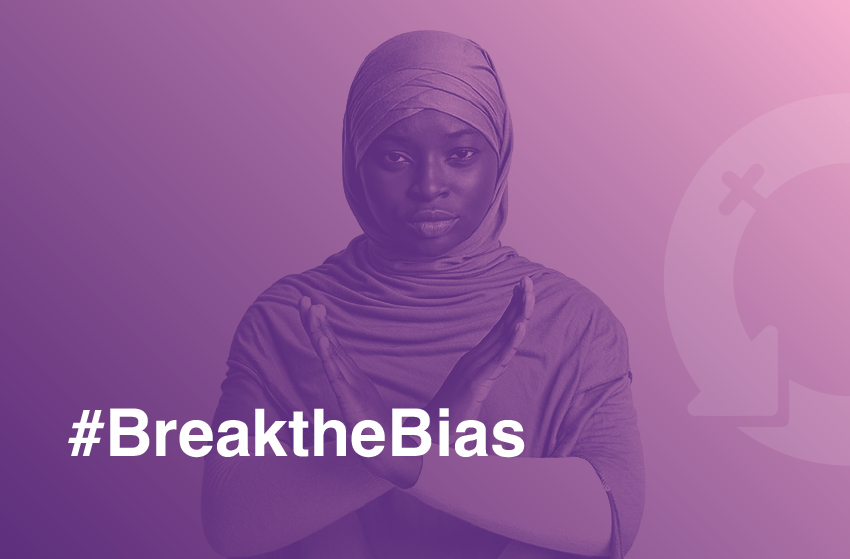The traits and characteristics that we often associate with effective communicators and leaders are stereotypically masculine; attributes like assertiveness; ambition; confidence; and competition. Regardless of personal communication and culturally learned linguistic styles, we are likely to aspire to these male traits and our competence is often judged on the extent to which we display them. This is especially challenging for more introverted people. Add gender and race to the mix and the impact is multiplied.
Workplace progression is often associated with visibility, which can create a conundrum for women. On the one hand, research shows that women’s contributions are systematically overlooked on the basis that they are too passive or compliant, limiting their professional advancement. Yet, when women make themselves more visible in the workplace, they can face backlash for violating expected behaviour and be seen as too aggressive or bossy and are, again, overlooked for progression.
What does research show?
Double blind studies illustrate this double-edged sword when it comes to assertiveness and appraisals:
- Women receive “negative personality criticism”, such as being called bossy or told to “watch their tone” in around 75% of performance reviews. Men, on the other hand, rarely do.
- Women receive 2.5 times the amount of feedback men do about aggressive communication styles, with phrases such as “your speaking style is off-putting.”
- Women are described as being “abrasive” far more often than men.
For Black women, this experience is only more concentrated. Harvard business review has studied anger in the workplace and how that emotion is received differently based on the race and gender of the person who is angry. Participants in the study were more likely to attribute the anger of Black women employees to internal characteristics or their personality, rather than because they were in a frustrating or unfair situation. This led to negative consequences for Black women, leading to poorer performance evaluations and lower assessment of their leadership capabilities. Harvard concluded that not all people are treated equally when it comes to expressing anger in the workplace, and people react more negatively to Black women who express anger.
Assessing performance on a perceived attribute is not just frustrating, but doesn’t give the accused much to work with. Several studies indicate women are far more likely to be judged on their performance in ways that don’t explain the level of performance or detail what can be improved. Being told you are “aggressive” or being advised to be “less aggressive” reflects not just patterns of bias but offers vague feedback and nonactionable suggestions for improvement.
We need to acknowledge that we have gender, race, and leadership stereotypes.
These stereotypes lead to unconscious bias, which impacts our attitudes and behaviours towards other people. Key workplace decisions are impacted contributing to inequality in selection and recruitment, appraisals, or promotion. Research shows that this bias does not just rest at men, as women can also internalise the misogyny and cultural conditioning and hold this bias too.
How do we stop unconscious bias?
It is important to acknowledge these biases exist, shaped by our cultural and social conditioning. By increasing our awareness of unconscious bias, we can start to mitigate against it. Recognising our own personal bias is a good starting point.
For both men and women, speaking out and interrupting remarks that demonstrate this kind of prejudice, such as “she is emotional” or that “she is too talkative” or “she is not very caring”, is important as these affect perceived competence and are labels not normally assigned to men in the same situation.
It is crucial to involve men in this debate and discourse as much as women, and that men are seen as ambassadors for equality and allies to female leaders. Recognising that women discriminate and penalise other women for being successful is also important.
Companies and organisations must take a closer look at their workplace policies and redefine what a “leader” really means. We need to actively work towards assessing the traditional gender norms, and the way we assign leadership qualities. We need to consider the implications of how we view certain traits, for example confidence, a trait more frequently seen in men, is often misinterpreted as competence. Individuals in positions to promote and hire managers should think more critically about what seems to be a leadership trait, versus what is an actual leadership trait. Arrogance and overconfidence, characteristics that frequently enable promotion into management positions, are also characteristics that cause poor performance. Research shows that traits such as humility and empathy, more frequently found in women, are actually among the best predictors of leadership success.
Our own research at GS has shown that our women applicants have higher scores against most of our Altitude leadership model scales, on average, compared to men. Ultimately, we should strive for cultural change where race, gender or any other characteristic does not result in being judged differently for exhibiting behaviours that are typically seen as representative of the archetypal ‘’male leader’’.
Women must continue to be vocal. Being heard and setting a standard for what is acceptable is the only way to accelerate change. Whether that’s being assertive, composed, receptive or unflappable is up to the individual.
Seishin Barrett, Senior Project Co-ordinator and Marie Blakesley, Principal Consultant.
Leadership & Talent Consultancy
